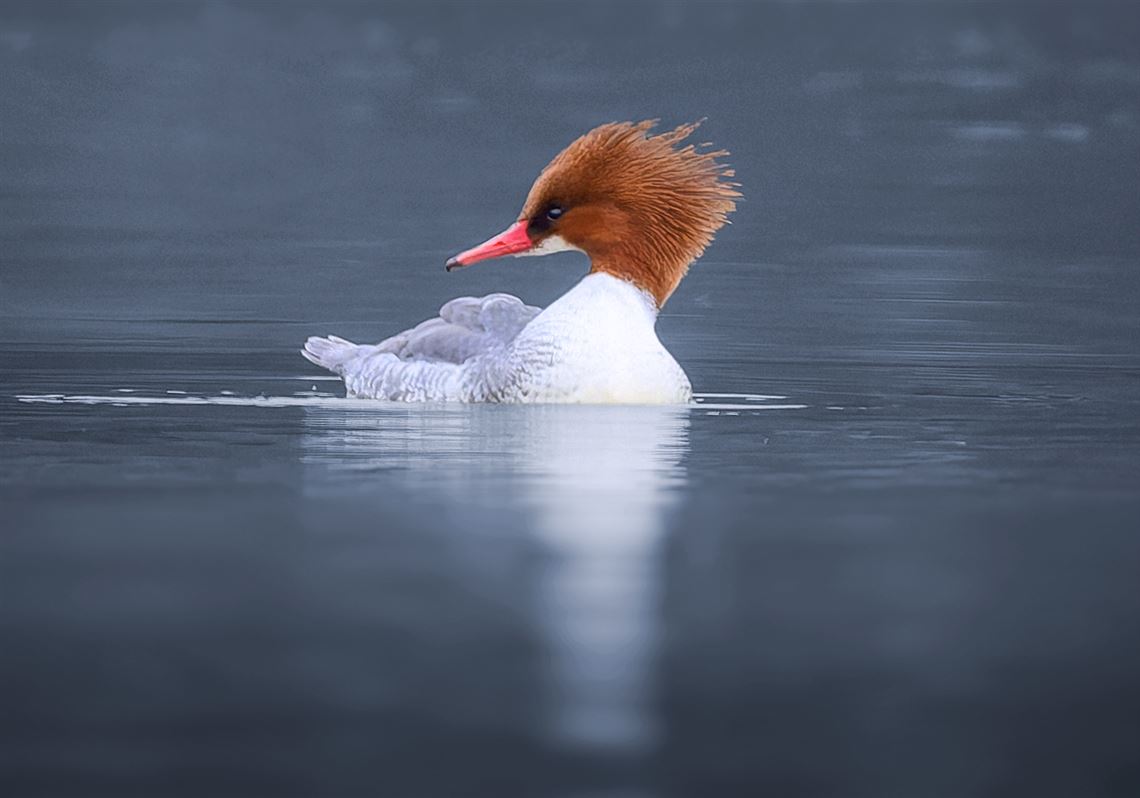A record-breaking number of volunteer watchers tallied the most species ever in December for the Audubon Society’s Christmas Bird Count in Pittsburgh.
“With 209 people and a balmy 65-degree day, we blew the doors off our species record,” said Brian Shema, operations manager for the Audubon Society of Western Pennsylvania and coordinator of the bird count in Pittsburgh.
Volunteer birders tallied 85 bird species and about 34,000 individuals on Dec. 28, shattering the record of 80 species set in 2012.
In its 125th year, the National Audubon Society Christmas Bird Count is the longest-running citizen science project in the country. Audubon, other organizations, and government agencies rely on the results for bird population estimates, trends and conservation priorities.
Given the warm temperatures and relative comfort in the field, volunteer watchers put in more time, Shema said.
In 2024, counters averaged 3.5 hours in the field, which is much higher than the typical 2 hours or less.
“Any time we can spread 209 watchers in the 15-mile diameter count circle, it gives me more confidence in our coverage and with greater coverage, I expect to find more birds,” Shema said.
And that they did.
Watchers found lots of waterfowl, breaking numerous count day records for some individual species.
Frozen waterways north of Pennsylvania cause wintering waterfowl to find open water in southern destinations such as Pittsburgh.
Volunteers found many species that are unusual for the region. Some were first-time additions to Audubon’s count day, including a brant goose in Schenley Park, and long-tailed ducks in Oakmont and the North Shore, where a ruddy duck made its second appearance ever for the count, Shema said.
The rarest was the brant goose, a long-distance migrant from the Canadian Arctic that is a smaller, more compact variation of the Canada goose with a black head and neck.
Waterfowl found in record-breaking numbers included 61 common mergansers, eight gadwalls and 16 pied-billed grebes.
A nimble and showy diving duck, merganser males sport a snowy white breast cleanly contrasted by an iridescent green head. Females are crowned with a shaggy, reddish-brown mohawk.
Known as sawbills, mergansers are fish-eaters with thin, serrated bills.
Other record numbers for count day included 84 turkey vultures, a species that has been overwintering in the area for the last two decades, Shema said.
A black vulture was found at Beechwood Farms in Fox Chapel, only the third time the bird has been documented for the Pittsburgh count.
The fish crow, which is from the East Coast, is expanding its range into the Pittsburgh area. Its current population is small; 117 were found on count day, he said.
Other birds found in record numbers included the winter wren (15), swamp sparrow (18), Eastern towhee (19) and red-winged blackbird (120).
“These are birds here that I attribute to milder winters, which is a trend,” Shema said.
According to the National Weather Service, 2024 was the warmest year in 150 years of record-keeping with the sixth warmest autumn (September-November).
Other uncommon birds adding to the record-breaking number of species on count day included Ross’s goose and red-headed woodpeckers in North Park and Schenley Park.
A major ingredient for the bountiful bird finds was attracting new birders and retaining longtime watchers.
“The anticipation and excitement on what the count will turn up is what really keeps me interested in doing it every year,” said Steve Gosser, of McCandless, who leads the Indiana Township portion of the Pittsburgh count.
A local wildlife photographer, Gosser has participated in the count for 15 years.
“It’s great to be a part of citizen science,” he said. “Most years we get some nice surprises.”
First Published: January 29, 2025, 10:30 a.m.
Updated: January 30, 2025, 6:42 p.m.
















